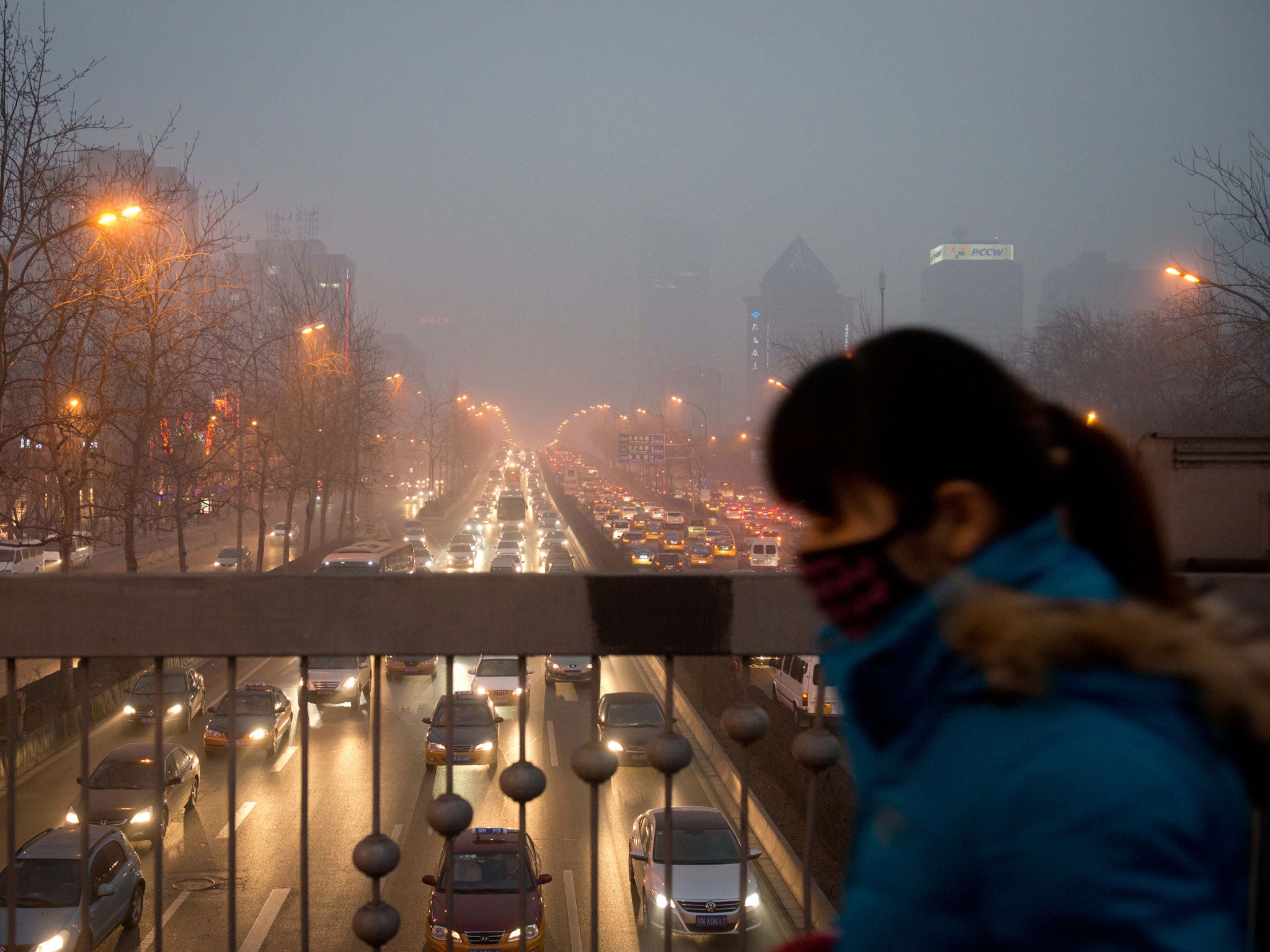The Independent's journalism is supported by our readers. When you purchase through links on our site, we may earn commission.
The Western media coverage of air pollution in China ignores the wider economic context
If China is to implement environmental changes in a sustainable way, there must be some trade-off between being green and staying out of the red.

Your support helps us to tell the story
From reproductive rights to climate change to Big Tech, The Independent is on the ground when the story is developing. Whether it's investigating the financials of Elon Musk's pro-Trump PAC or producing our latest documentary, 'The A Word', which shines a light on the American women fighting for reproductive rights, we know how important it is to parse out the facts from the messaging.
At such a critical moment in US history, we need reporters on the ground. Your donation allows us to keep sending journalists to speak to both sides of the story.
The Independent is trusted by Americans across the entire political spectrum. And unlike many other quality news outlets, we choose not to lock Americans out of our reporting and analysis with paywalls. We believe quality journalism should be available to everyone, paid for by those who can afford it.
Your support makes all the difference.In the run up to New Year, the streets of Shanghai have been eerily empty, as most migrant workers have already returned home via plane, train, bus or shared car, in the biggest mass human migration on the planet. But, at midnight the city seemed to come alive again. The sky was lit up by a wash of colours from fireworks and the air was pierced with the deafening sound of firecrackers.
As the Year of the Dragon segued into the Year of the Snake, fireworks were let off to celebrate and ward off evil spirits.Despite a bid from the authorities to tackle air pollution by limiting the amount of fireworks cities, the people seem determined to celebrate in the traditional way.
The Chinese festivities have prompted much coverage in the UK press ranging from the personality traits of a person born in the year of the snake (a bit sneaky) to a London-based attempt to break the record for most people dancing ‘Gangnam Style’ (PSY’s not even Chinese…?) but the most prominent stories focussed on air pollution in big Chinese cities. These reports portray the issue as ‘airmageddon’, but display little understanding of the wider context.
We must all remember that China is still developing and is a massive manufacturer of goods consumed the world over. Their buoyant economy helps keep the worldwide markets afloat. If China is to implement environmental changes in a sustainable way, there must be some trade-off between being green and staying out of the red.
The Chinese authorities cannot insist on cleaner and more expensive fuel or shut down industries which heavily pollute the environment immediately; those industries employ people and add to the country's GDP. Improving China’s environmental standards will be a long process, but if there is an upside to the communist system it is this: the chance to implement such long-term plans without the risk of a change in political policy.
China’s current, Twelfth Five-Year Plan focuses on both climate change and environmental issues so arrangements are already in place to improve the air quality. In addition, a political report delivered in 2012 by president and departing party chief, Hu Jintao, said that China must address the environmental problems worsened by rapid development. It is also worth mentioning that China exceeded its ambitious targets for sulphur reduction in its most recent five-year plan.
China began report its PM 2.5 readings in 2012 after previously being criticised for not publishing this data. PM 2.5 refers to particulate matter measuring 2.5 microns or less in diameter, fine enough to enter into the lungs and bloodstream and cause the most serious health problems. During the worst periods of pollution in Beijing, the PM 2.5 reading reached 500, the highest level on the scale. By comparison, London's worst readings have been between 59 and 64.
But let’s not forget that only a few years ago London did not comply with the EU’s air quality standards and experts say it also took America over 25 years to raise its air quality. Moreover, the EU and the US both had their largest periods of rapid industrialisation in the twentieth century, long before they agreed to publish their PM 2.5 readings.
When it comes to China, it is as if the West has forgotten its less then environmentally friendly past, and so we are judging China according to unrealistic expectations.
Join our commenting forum
Join thought-provoking conversations, follow other Independent readers and see their replies
Comments